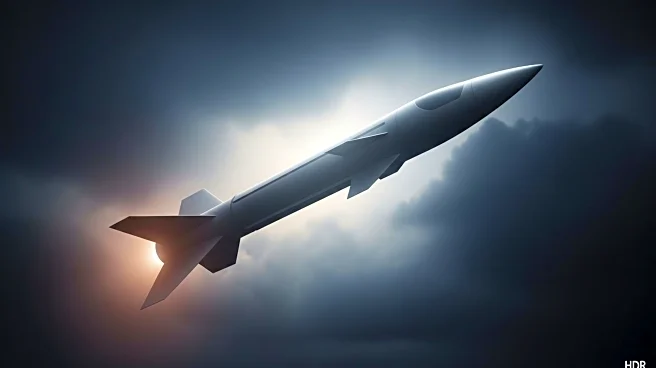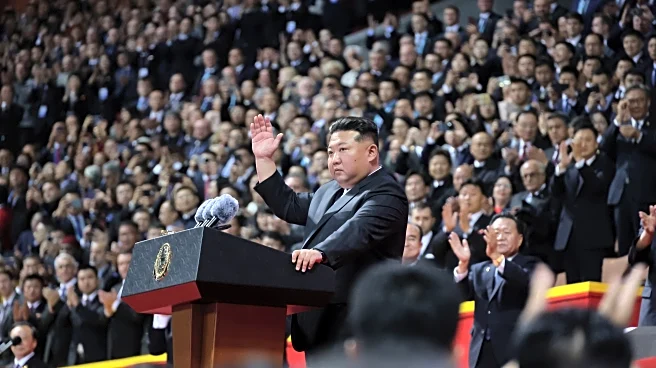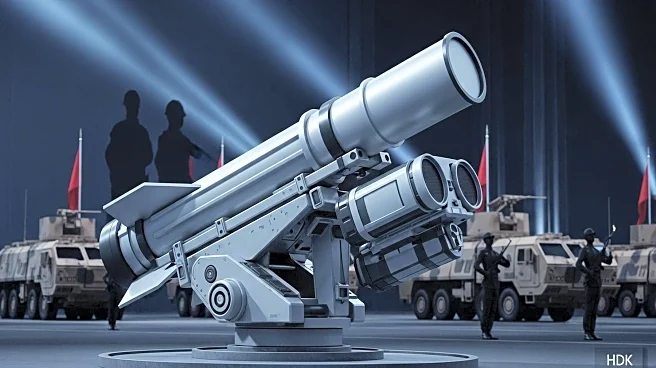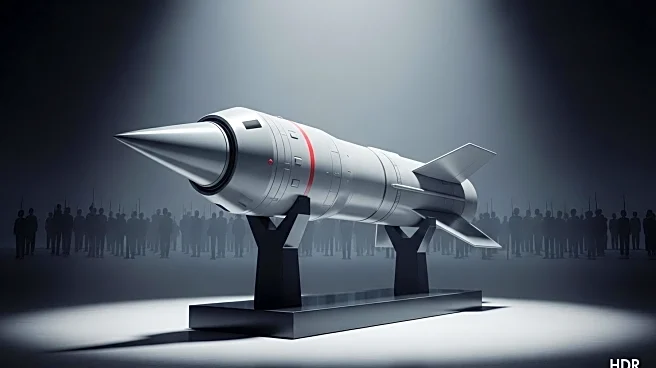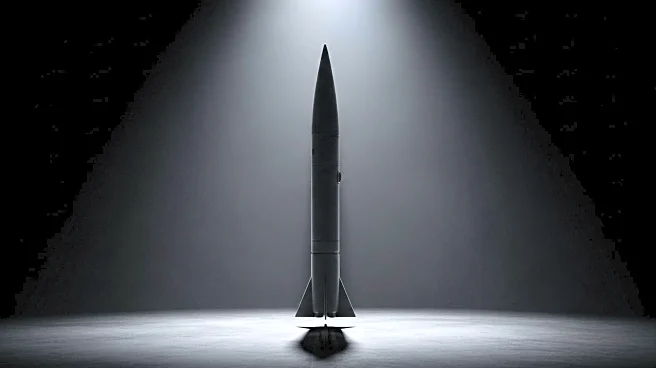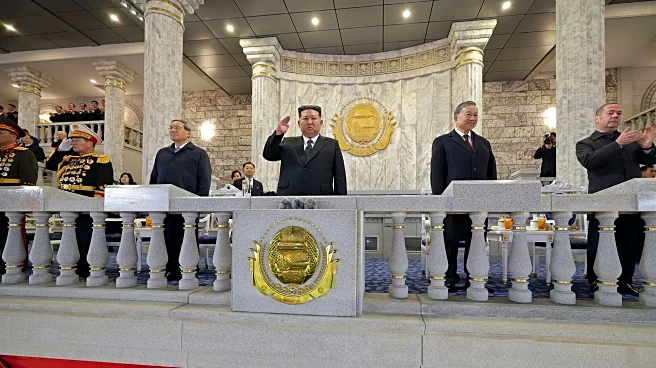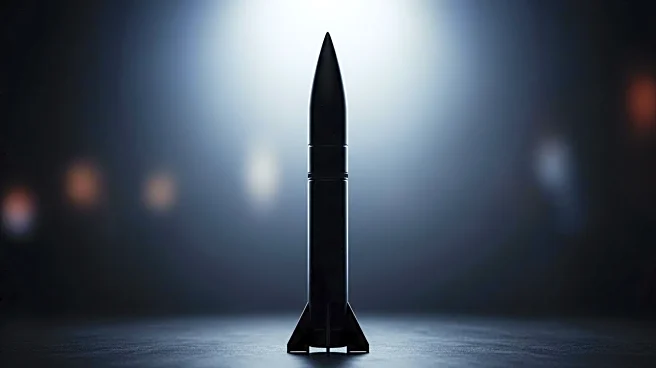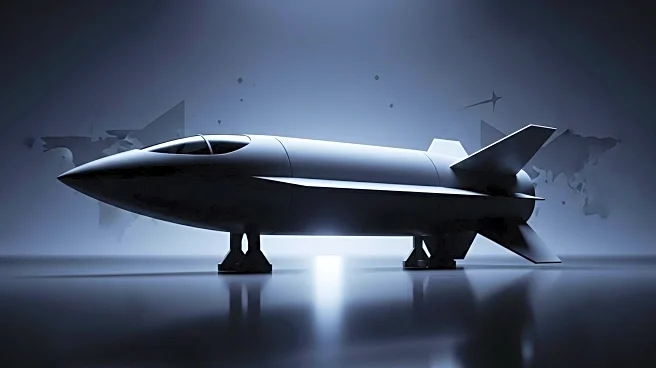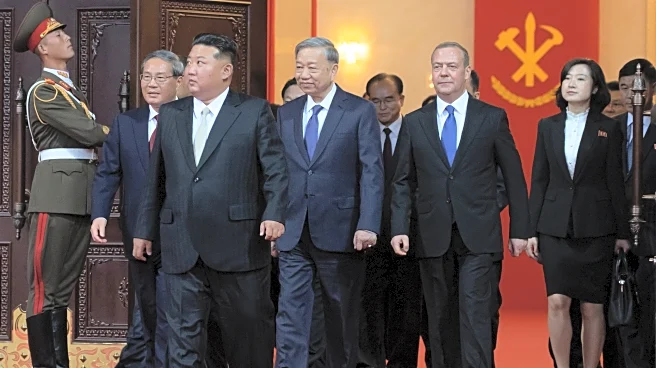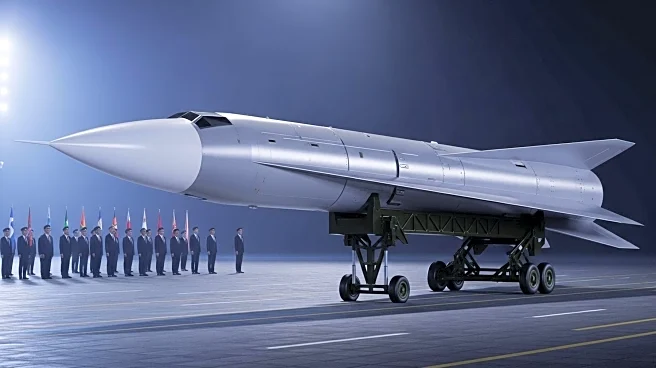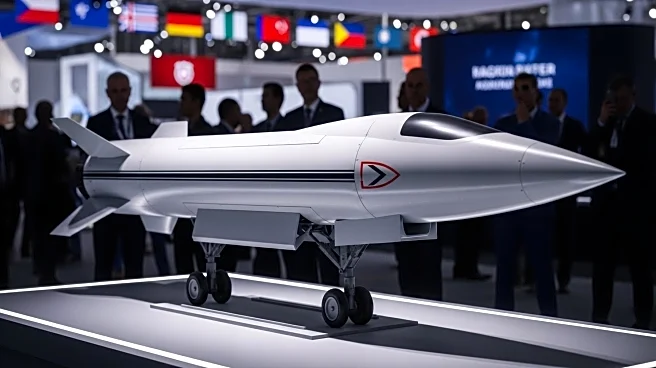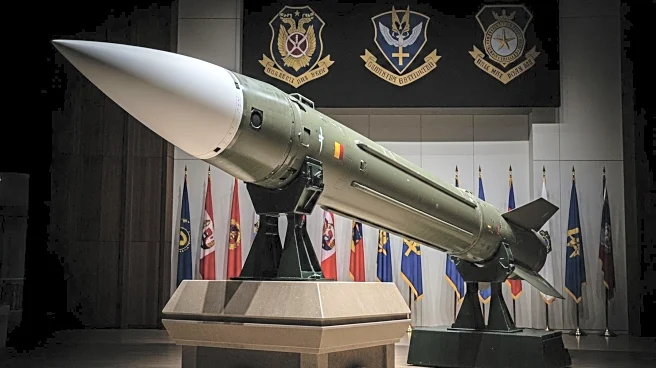What is the story about?
What's Happening?
North Korea has unveiled its latest intercontinental ballistic missile (ICBM), the Hwasong-20, during a military parade in Pyongyang. The event, led by Kim Jong Un, showcased advanced weaponry, including strategic cruise missiles and drone launch vehicles. The Hwasong-20 is described by North Korean state media as the country's 'most powerful nuclear strategic weapon system.' The missile's engine, made with carbon fiber, reportedly produces significant thrust, potentially allowing it to target the U.S. mainland. However, questions remain about its guidance system and warhead re-entry capabilities. The parade marked the 80th anniversary of North Korea's ruling Workers' Party and highlighted the country's alignment with China and Russia.
Why It's Important?
The unveiling of the Hwasong-20 underscores North Korea's ongoing efforts to expand its nuclear arsenal amid heightened tensions with the United States and South Korea. This development poses a significant challenge to U.S. security, as the missile could potentially reach the mainland. The event also signals North Korea's strengthening ties with China and Russia, which could impact geopolitical dynamics in the region. The U.S. continues to advocate for the dismantling of North Korea's nuclear program, but Pyongyang remains firm in its stance as a nuclear power. The introduction of this missile could strain U.S. missile defense systems and alter strategic calculations in Washington.
What's Next?
Analysts predict that North Korea may conduct a test launch of the Hwasong-20 before the end of the year. Such a test would further escalate tensions and could prompt responses from the U.S. and its allies. The missile's potential to carry multiple warheads could challenge existing U.S. missile defense capabilities, necessitating adjustments in defense strategies. Additionally, North Korea's growing cooperation with Russia and China may lead to increased military and diplomatic exchanges, influencing regional security dynamics.
Beyond the Headlines
The parade and missile unveiling reflect North Korea's broader strategy to assert its independence and resist Western influence. Kim Jong Un's emphasis on military strength and alignment with socialist forces highlights the ideological divide between North Korea and Western nations. The presence of Chinese and Russian officials at the event underscores the potential for a more unified front against Western policies, which could have long-term implications for international relations and security.
AI Generated Content
Do you find this article useful?
